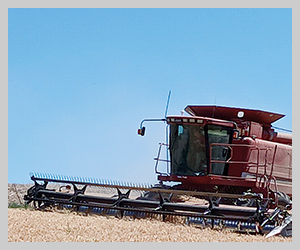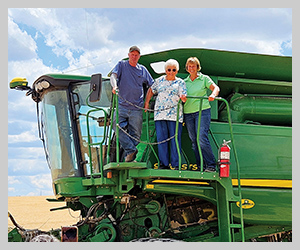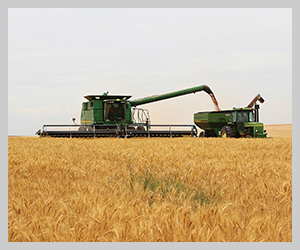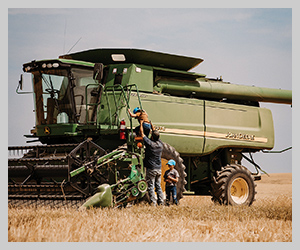CRP seeding window narrows Wheat growers advocating for change in policy
2025April 2025
By Trista Crossley
Editor

Planting a successful Conservation Reserve Program (CRP) stand depends heavily on adequately preparing the ground, but some growers in the driest parts of Eastern Washington are concerned their preparation window is being closed too early.
According to the Farm Service Agency’s (FSA) policy, conservation plans must be seeded within 12 months of the CRP effective date, which is usually Oct. 1 of any given year, with options to extend if approved by the FSA county committee or county executive director. However, if the ground is not seeded with the approved permanent cover within 36 months of the effective date, the contract may be terminated.
Last year during a statewide review, the FSA state office in Spokane discovered some Eastern Washington conservation plans were being created that went beyond 24 months to seed because some plans were written using a two-year chemfallow rotation with seeding planned for the following late fall and spring. The Natural Resources Conservation Service (NRCS), which writes the conservation plans for CRP, requires seeding during a dormant period, usually from late fall to early spring.
Chris Herron, a farmer in Franklin County who custom seeds thousands of CRP acres, says that even a 24-month seeding window is too short, especially if late fall and winter precipitation is below average.
Herron explained that he waits until spring, after his area has received the majority of its yearly precipitation, to work CRP ground for the first time — mowing followed by spraying. This allows him to catch the first winter’s cheatgrass and any volunteer wheat or other annuals that began growing in the spring. Russian thistle starts showing up with the heat in May or June, so Herron generally hits the ground with at least one more chemical application before fall.
“We had enough moisture to treat cheatgrass and volunteer wheat in the spring. We rarely get enough rain to do it twice,” he explained. “In Franklin County, we’ve always pushed that ground preparation into the second spring growing season where we get another chance to kill cheatgrass and weeds.”
If growers take two springs to make sure the weeds are dealt with, by the time the next window for seeding rolls around, which for Herron begins in November, they are entering month 25 or 26 of their contract. Herron said trying to seed in November is tricky, and if conditions aren’t right, they will have to wait until February to seed.
“When the fall is dry, CRP seeding should be delayed until soil moisture is adequate and soil temperatures are below 42 degrees,” he said. “In order to abide by the window of two years, that only gives us one chance, the spring of that first year, to kill weeds and make a good seed bed. If Mother Nature cooperated, and it rained in the summer and fall of year one, and I could get two crops of cheatgrass up and dead, then I could seed on month 13 or 14, but Mother Nature doesn’t often cooperate in Franklin County.”
When CRP was first instituted, Herron said those who seeded after the first year saw failure rates of over 70% because of weed complications. Growers who don’t meet stand requirements will have their CRP contracts terminated. In some cases, the county committee may grant a second chance at reseeding, although the cost of preparing the ground and reseeding generally falls mostly on the farmer at that point.
“That is why, in the beginning, you want to pull out all the stops to prepare the ground and get it as clean as you can the first two spring seasons, so your grass has every chance to grow,” Herron said. “The rules need to be flexible enough to deal with the variabilities of farming.”
The Washington Association of Wheat Growers has been working with the state FSA office and the state’s congressional delegation to modify the deadlines so that they work better for Eastern Washington’s dry climate. In the meantime, FSA advises growers to carefully select practices that are achievable in their area; understanding the Environmental Benefits Index (EBI) is critical to offering land into CRP.














